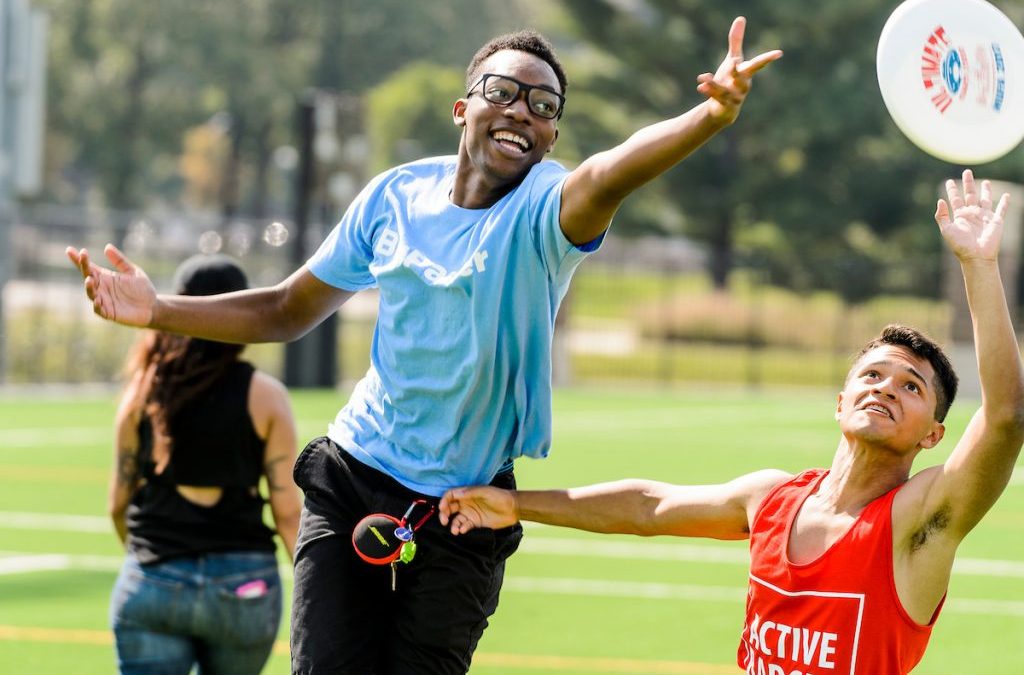by admin | Jul 20, 2020 | News
Jackie Millard’s encouraging voice comes over Zoom’s audio, piano music tinkling. She directs listeners in their own homes to sit comfortably, then inhale deeply and exhale slowly. “Feel the slow cycle of the breath moving in and out of the body; it’s like a gentle wave,”she says. Spring is a time of renewal, she notes.“Even in this time of challenge, we can use this opportunity to try something new, to think in a new way.”
Welcome to Now and Zen, a virtual yoga class Vision Loss Alliance of New Jersey is offering during the COVID-19 crisis. VLANJ tapped Millard, one of the nonprofit’s instructors, to teach the hour-long hatha yoga class on Wednesday mornings.
“I think that in this time, we all can benefit from the calm and stillness,” said Millard, who became a certified yoga instructor seven years ago.
During a recent class, Millard had students begin the session seated, imagining “white light flowing from the base of our spine, through the torso, through the neck, to the crown of the head.” She then had them visualize the light flowing “like a fountain” down the outside of their bodies, spreading relaxation. Millard led students through head-to-toe stretches. She then had them stand for a series of gentle yoga poses. The class moved to nostril breathing exercises.
She rounded out the class with a relaxing guided meditation: students imagined walking through woods, coming upon a river gently flowing over rocks and logs. That, she said, is how people can approach life, “moving over and around obstacles…yielding and bending…moving peacefully and calmly forward.” In the final minutes, the class offers divine peace to the world, repeating the word, “Shanti.”
In addition to teaching Now and Zen, Millard takes five yoga classes a week. Millard, who is blind, teaches mobile technology and essential low vision classes, which were suspended mid-March because of the coronavirus response restrictions. She is one of three instructors for the new Technology Learning Lab, which will launch once the Denville location reopens.
Now and Zen is free to anyone who lives with vision loss. To register, or if you have any questions, send a message to BeyondSight@vlanj.org.
by admin | May 24, 2020 | Blog, News
Article by Edd Gent via Singularity Hub
A New Bionic Eye Could Give Robots and the Blind 20/20 Vision
Image Credit: Free-Photos from Pixabay

by admin | May 23, 2020 | Blog, News
As May is coming to a close and a lot of us are beginning to spend more time outside, it’s imperative to take one more look at eye safety – May is Sports Eye Safety month after all.
Why the focus on eyes? Aren’t sports supposed to be fun and good for your health?
Yes, sports are generally great for your health, but they can also bring about lots of injuries! More than 600,000 eye injuries related to sports occur each year, and approximately one-third of these injuries occur in children. Eye injuries, coincidentally, are the leading cause of blindness in children, and most eye injuries among kids aged 11-14 occur while playing sports.
What kind of injuries are we talking about?
Sports eye injuries can range from abrasions of the cornea and bruises of the lid to internal eye injuries, such as retinal detachments and internal bleeding. Nearly 43 percent of sports-related eye injuries involve children under the age of 15.5 and boys between the ages of 11 and 15 are up to five times more likely to sustain eye injuries requiring hospital treatment than girls of the same age. Every 13 minutes an emergency room in the U.S. treats a sports-related eye injury for children and adults. It is also estimated that sports-related eye injuries in the U.S. account for more than 100,000 physician visits per year at a cost of more than $175 million . Of the 1.6 to 2.4 million Americans who sustain eye injuries each year, an estimated 40,000 will be legally blinded in the injured eye.
How can you protect your eyes?
Taking all of this data into account, it’s astonishing that the number of people who use protective eyewear (safety glasses or goggles) is extremely low. Yet, the best way to prevent a sports-related eye injury is to wear appropriate, sport-specific protective eyewear that is properly fitted. The American Academy of Pediatrics, American Academy of Ophthalmology and American Optometric Association all strongly recommend protective eyewear for all participants in sports in which there is a risk of eye injury, whether it be tennis, golf, basketball or any other sport. Bottom line – get some eye gear and keep your eyes safe when playing sports.
Image via University of Wisconsin.

by admin | May 20, 2020 | Blog, News
Google has developed an Artificial intelligence (AI)-based system that performed as well as, and in certain cases better than, clinicians in predicting progression of a common eye condition that can cause vision loss.
The results, published in the journal Nature Medicine, suggest that the AI model, built in partnership with Alphabet subsidiary DeepMind and Moorfields Eye Hospital in Britain, could help doctors study preventive treatments for age-related macular degeneration (AMD), the third largest cause of blindness across the globe.
Around 75 per cent of patients with AMD have an early form called “dry” AMD that usually has relatively mild impact on vision.
A minority of patients, however, develop the more sight-threatening form of AMD called exudative, or “wet” AMD. This condition affects around 15 per cent of patients, and occurs when abnormal blood vessels develop underneath the retina.
These vessels can leak fluid, which can cause permanent loss of central vision if not treated early enough. Wet AMD often affects one eye first, so patients become heavily reliant upon their unaffected eye to maintain their normal day-to-day living.
Unfortunately, 20 per cent of these patients will go on to develop wet AMD in their other eye within two years. The condition often develops suddenly but further vision loss can be slowed with treatments if wet AMD is recognised early enough.
The new research showed that the Google Health AI model has the potential to predict whether a patient will develop wet AMD within six months.
The researchers trained their model using a retrospective, anonymised dataset of 2,795 patients. These patients had been diagnosed with wet AMD in one of their eyes, and were attending one of seven clinical sites for regular 3D optical coherence tomography (OCT) imaging and treatment.
For each patient, the researchers worked with retinal experts to review all prior scans for each eye and determine the scan when wet AMD was first evident.
The AI system is composed of two deep convolutional neural networks, one taking the raw 3D scan as input and the other taking a segmentation map outlining the types of tissue present in the retina. It used the raw scan and tissue segmentations to estimate a patient’s risk of progressing to wet AMD within the next six months.
In the future, this system could potentially help doctors plan studies of earlier intervention, as well as contribute more broadly to clinical understanding of the disease and disease progression.
Article via Express Computer. Click the link below for more info!
https://www.expresscomputer.in/artificial-intelligence-ai/google-ai-could-predict-eye-condition-behind-vision-loss/56246/

by admin | May 17, 2020 | Blog, Program
Made possible by a generous grant from The Provident Bank Foundation, VLANJ Tech Talks discusses accessible technologies and accessibility features of personal computers, iPads and iPhones. The classroom is virtual, conducted via Zoom, and free for all attendees.
In our next session, taking place on Wednesday, May 27th from 7PM to 9PM EST, we discuss grocery store shopping apps and the Amazon shopping app. Learn what shopping options are available for people with vision loss and find ways to navigate shopping for groceries and other necessities from home.
Registration is required for this class, as spots are limited. Use the link below to register:
https://us02web.zoom.us/meeting/register/tJEucuCupzMqEt3AsqebyOHAllv5-knTE7am
After registering, you will receive a confirmation email containing information about joining the meeting. For more information, email beyondsight@vlanj.org.



